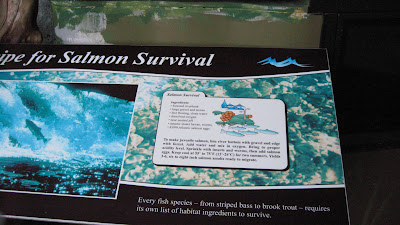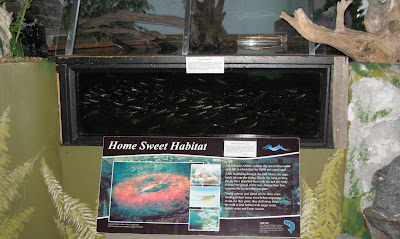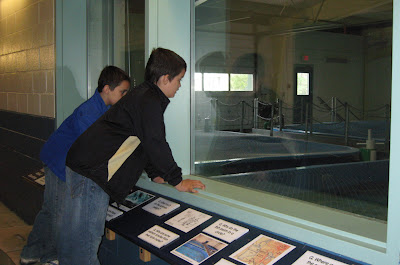Working in a in a public office building in Bangor, Maine, I hear a lot of things. When I overheard a kind-hearted colleague worrying about what was going to happen to a bat that was clinging to a wall in the back stairwell, my ears perked up. She had called several agencies she thought would care, but they never returned her calls and nobody ever showed up to assist the bat. I knew immediately the bat was certainly in a place where the poor thing would either be trapped without adequate food or water once it came out of hibernation in the spring or would be exterminated by people who misunderstood its critical role in our ecosystem that relies so heavily on the benefits bats provides.
 |
| The bat was trapped in a public building...what to do? |
 |
| The bat is rescued and ready for transport to Misfits Rebab in Auburn, |
Anyone who really knows me, knows that since childhood I have involved myself with wildlife rescues. I am a tree-hugging advocate for organic crops and nature in its wild and natural state. I believe all things on earth are provided to support other things in a never-ending cycle of life that spins evenly in a perfect circle. I also believe when you remove anything from the natural order of things, things get out of balance and life on earth starts to warble out of balance. History repeatedly tells us about mistakes we, as humans, have made by not focusing on nature, yet somehow our culture has gotten in the way of actually noticing those facts for the most part. Much of the world’s population, is, as I am, busy with everything else going on in an environment where new funky shoes, a better smart phone, and a political scandal seem important. A little bat’s plight and the impact this one creature has on the environment can easily go unnoticed in our busy day-to-day lives. I had to care.
 |
| Legacy the bat, is in good hands for the winter and will return to the great Maine outdoors to carry on nature's legacy in the spring. |
I’d never rescued a bat before, how hard could it be? An Internet search led me to a wonderful site, batworld.org, that told me just about everything I never knew about bats. It can actually put you in touch with the name and number for an expert on the subject anywhere in the world. I was impressed! I was also talking to my contact in Auburn, Maine within minutes learning how to go about a rescue and how to care for the bat until I could transport it to her about a hundred miles away.
With the assistance of three more co-workers, the rescue took place successfully and the bat was delivered in good health to Misfits Rehab in Auburn. It will spend the remainder of the winter with eleven other bats who have also ended up in the shelter for one reason or another this season and be cared for by a trained and licensed bat care expert. We have named him Legacy.
Very special and interesting things I’ve learned from the little brown bat named Legacy:
· First of all he is not a rodent and is not even related to rodents. He is scientifically classified as Chiroptera, a Greek word which means hand-wing. Bats are grouped with primates and lemurs in a grand order called Archonta.
· Legacy is a male large brown bat, the most common bat to this area. As small as Legacy is, he is the largest bat species in Maine. Maine also has a little brown bat and a rare long-haired bat.
· Even though he is common, his species is threatened by a disease called White Nosed Syndrome (WNS) which is proving to be devastating to the bat populations in Maine and elsewhere. If you see a bat with white on its face of wingtips, please report it. There is no cure, yet, but it will help experts track and learn about the disease. Legacy does not suffer from WNS.
· Legacy is an insect eater. Insect-eating bats are equipped with a unique built in sonar system, echolocation, that’s thousands of times more efficient than any sonar system built by humans. Bats use it for navigating at record speeds through total darkness. If it seems a bat is swooping at your hair, it is really after a mosquito that is preparing to bite you.
· Legacy will be inoculated while he is in rehab. Bats do not carry rabies, however, they are capable of catching the disease just like any mammal is.
· This bat will most likely migrate back to Bangor when it released in the spring to do its part in catching about 1,200 mosquitoes and other disease carrying insects per hour when feeding at night around the Kenduskeag Stream, Penobscot River, and, if you are a lucky Bangor resident, in your back yard.
· Bats are extremely clean creatures and devote a lot of time grooming their fur, very much like a cat does.
· Half of the bats in the United States are listed as rare, threatened or endangered. It is usually illegal to exterminate a bat.
· I never dreamed I could, but I fell in love with a bat. I’m so glad I could help him out.
Blae and I hope you have taken a little time out of your busy day to read this and learn a bit about bats and what they mean to our planet. If you see a bat trapped in a building, or orphaned, you can find helpful information, just like I did, on batworld.org.
If you wish to read about Legacy's rescue, it is documented on Facebook.com/BarefootInTheJungle.
© Copyright Gail J. VanWart 2014 All Rights Reserved
© Copyright Gail J. VanWart 2014 All Rights Reserved












